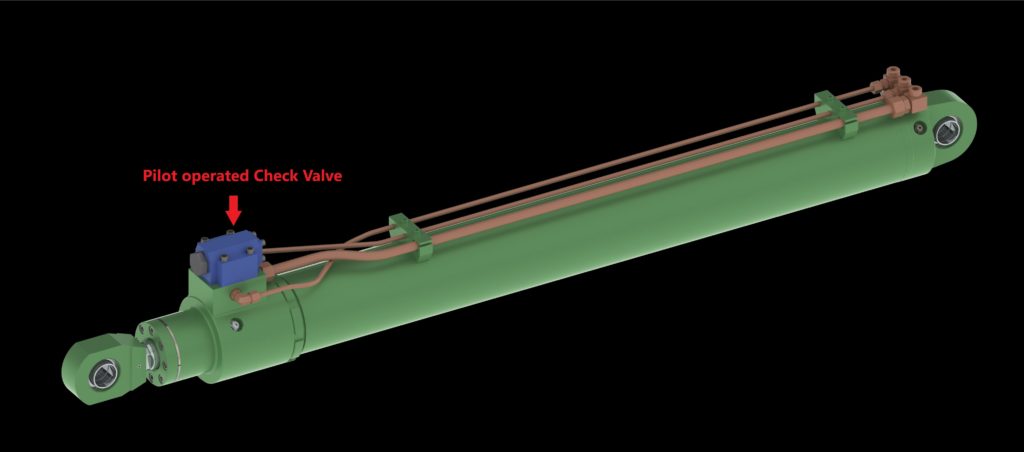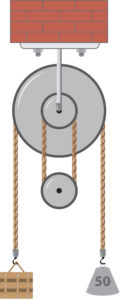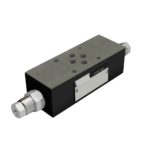Hydraulic cranes absolutely rely on the integrity of their high-pressure fluid systems for safe operation. A crane can become out of level when an outrigger cylinder leaks over time, possibly leading to a tip over. A boom can collapse if a hydraulic hose ruptures. It is not possible to absolutely prevent hydraulic cylinders from developing leaks or prevent hoses from rupturing during the life of a typical crane, therefore crane manufacturers provide load holding valves at key components to prevent these dangerous incidents. In fact, ASME B30.5, Mobile and Locomotive Cranes, requires load holding valves or equivalent devices at outrigger cylinders, boom support cylinders, and boom telescoping cylinders.
Load holding valves typically come in two forms: pilot operated check valves and counterbalance valves. Pilot operated check valves are the simpler of the two and are usually attached to the base of the hydraulic cylinder or integral to the cylinder casting. Pilot operated check valves allow hydraulic fluid to flow into a cylinder but do not allow flow out of the cylinder unless pressurized fluid is supplied through a pilot line connected to the control valve when motion is desired. These check valves prevent either drifting due to slow leaks or rapid motion due to a hose burst.
Counterbalance valves are usually more complex than pilot operated check valves and can perform a wider variety of functions. They can be installed in place of pilot operated check valves and perform the same function, possibly providing smoother operation. More importantly, counterbalance valves are needed to prevent overrunning loads when lowering, much as their simple mechanical namesake in the figure below. Rather than only allowing either full flow or no-flow like pilot operated check valves, counterbalance valves can provide full flow for hoisting while metering flow to provide controlled lowering as well as acting as a load holding brake when no motion is desired.
The proper selection of, and physical location of, load holding valves to suit an individual hydraulic system is critical to their proper function, particularly for counterbalance valves. Counterbalance valves often require adjustment of their set points once they are installed on an individual crane. All load holding valves have tight internal clearances and require clean hydraulic fluid. Periodic replacement of load holding valves or their internal components due to wear is required to provide continued proper function.
In addition to cranes, load holding valves are found on equipment such as aerial work platforms and general construction equipment such as excavators, backhoes, and skid steers, where they perform similar functions. Rattling noises and jerky operation due to malfunctioning or misadjusted counterbalance valves are common signs of poorly maintained construction equipment.
Load holding valves are small components on enormous machines that are often overlooked when determining the reason behind the improper operation of a crane’s motion functions. Improper operation sometimes is only a nuisance, but at other times can lead to injury or property damage. Warren has the knowledge and experience to help with your questions or concerns concerning load holding valves.
John Phillips, senior consulting engineer at Warren, has more than 35 years of crane and heavy equipment experience and more than 20 years of experience in forensic engineering. A licensed professional engineer in South Carolina, North Carolina, Georgia, Louisiana and Ohio, he’s NCEES registered both as a model engineer and with The United States Council for International Engineering Practice, USCIEP. John has designed crane systems, supervised installation, tested and certified lifting equipment even serving as a project engineer for maintenance and certification of nuclear weapon lifting and handling systems. His extensive experience helps him determine the cause and scope of damage for crane, hoist and other lift equipment incidents.






